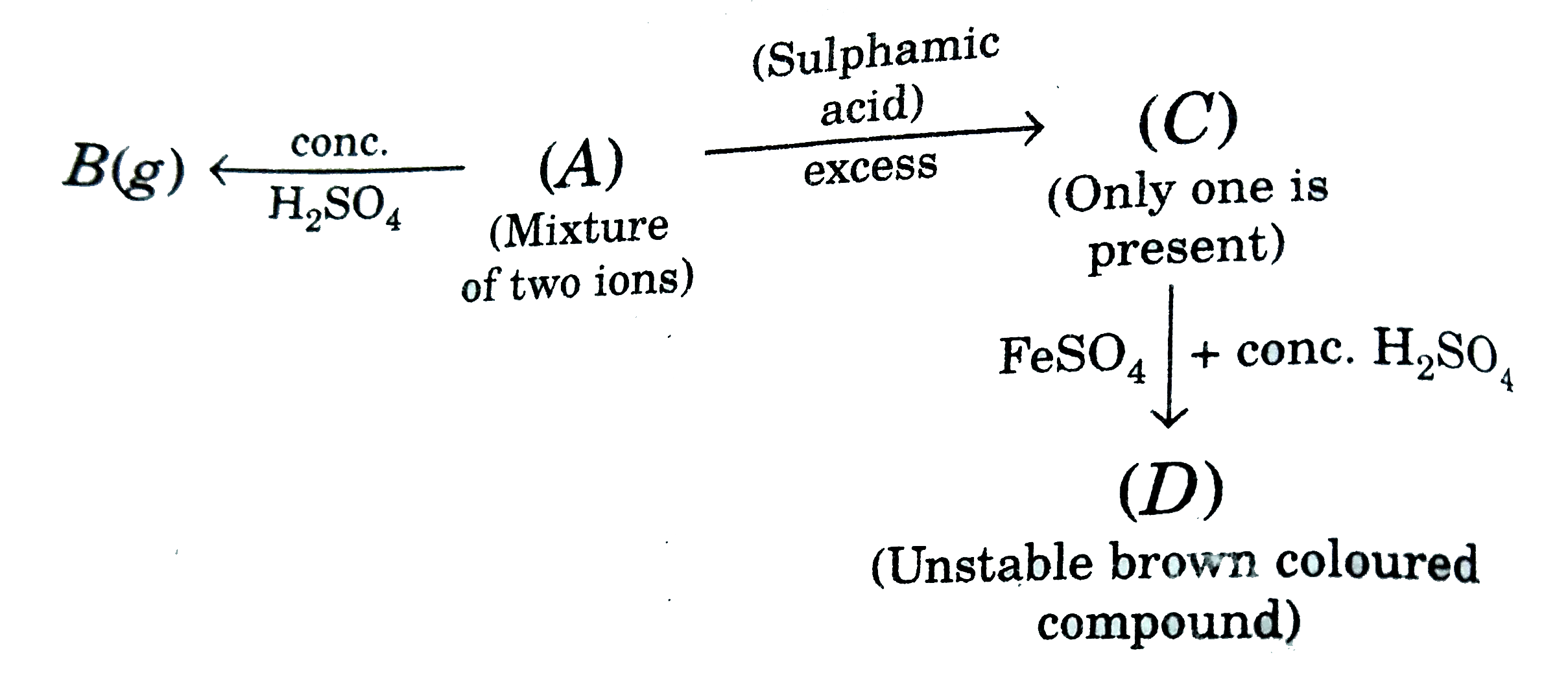In which of the following oxyanions the oxidation state of central atom is not same as that of its group number in periodic table?
MnO−4
Cr2O2−7
VO3−4
FeO2−4
The correct Answer is:D
To solve the problem of determining in which oxyanion the oxidation state of the central atom is not the same as its group number in the periodic table, we will analyze the oxidation states of the central atoms in the given oxyanions.
Step 1: Identify the Oxyanions and Their Central Atoms
We need to consider the following oxyanions:
1. MnO₄⁻ (Permanganate)
2. CrO₄²⁻ (Chromate)
3. VO₃²⁻ (Vanadate)
4. FeO₄²⁻ (Ferrate)
Step 2: Determine the Group Numbers of the Central Atoms
- Manganese (Mn) is in Group 7.
- Chromium (Cr) is in Group 6.
- Vanadium (V) is in Group 5.
- Iron (Fe) is in Group 8.
Step 3: Calculate the Oxidation States of the Central Atoms
1. For MnO₄⁻:
- Let the oxidation state of Mn be x.
- The equation becomes: x+4(−2)=−1
- x−8=−1
- x=+7
- Group number = 7, Oxidation state = 7 (Matches)
2. For CrO₄²⁻:
- Let the oxidation state of Cr be x.
- The equation becomes: x+4(−2)=−2
- x−8=−2
- x=+6
- Group number = 6, Oxidation state = 6 (Matches)
3. For VO₃²⁻:
- Let the oxidation state of V be x.
- The equation becomes: x+3(−2)=−2
- x−6=−2
- x=+4
- Group number = 5, Oxidation state = 4 (Does Not Match)
4. For FeO₄²⁻:
- Let the oxidation state of Fe be x.
- The equation becomes: x+4(−2)=−2
- x−8=−2
- x=+6
- Group number = 8, Oxidation state = 6 (Does Not Match)
Step 4: Identify the Oxyanion with a Mismatched Oxidation State
From the calculations:
- MnO₄⁻: Oxidation state = 7 (Matches)
- CrO₄²⁻: Oxidation state = 6 (Matches)
- VO₃²⁻: Oxidation state = 4 (Does Not Match)
- FeO₄²⁻: Oxidation state = 6 (Does Not Match)
Conclusion
The oxyanions where the oxidation state of the central atom does not match its group number are VO₃²⁻ and FeO₄²⁻.
Final Answer
The oxyanion in which the oxidation state of the central atom is not the same as that of its group number is VO₃²⁻ (Vanadate) and FeO₄²⁻ (Ferrate).
We need to consider the following oxyanions:
1. MnO₄⁻ (Permanganate)
2. CrO₄²⁻ (Chromate)
3. VO₃²⁻ (Vanadate)
4. FeO₄²⁻ (Ferrate)
- Manganese (Mn) is in Group 7.
- Chromium (Cr) is in Group 6.
- Vanadium (V) is in Group 5.
- Iron (Fe) is in Group 8.
1. For MnO₄⁻:
- Let the oxidation state of Mn be x.
- The equation becomes: x+4(−2)=−1
- x−8=−1
- x=+7
- Group number = 7, Oxidation state = 7 (Matches)
- Let the oxidation state of Cr be x.
- The equation becomes: x+4(−2)=−2
- x−8=−2
- x=+6
- Group number = 6, Oxidation state = 6 (Matches)
- Let the oxidation state of V be x.
- The equation becomes: x+3(−2)=−2
- x−6=−2
- x=+4
- Group number = 5, Oxidation state = 4 (Does Not Match)
- Let the oxidation state of Fe be x.
- The equation becomes: x+4(−2)=−2
- x−8=−2
- x=+6
- Group number = 8, Oxidation state = 6 (Does Not Match)
From the calculations:
- MnO₄⁻: Oxidation state = 7 (Matches)
- CrO₄²⁻: Oxidation state = 6 (Matches)
- VO₃²⁻: Oxidation state = 4 (Does Not Match)
- FeO₄²⁻: Oxidation state = 6 (Does Not Match)
The oxyanions where the oxidation state of the central atom does not match its group number are VO₃²⁻ and FeO₄²⁻.
The oxyanion in which the oxidation state of the central atom is not the same as that of its group number is VO₃²⁻ (Vanadate) and FeO₄²⁻ (Ferrate).
Topper's Solved these Questions
Similar Questions
Knowledge Check
In which of the following oxoanions the oxidation state of central atom is not same as that of its group number in periodic table ?
AMnO−4BCr2O2−7CVO3−4DFeO2−4The oxoanion in which the oxidation state of the central atom is same as its group number in the periodic table is:
ASO2−2BVO−2CMnO2−4DCr2O2−7
What is oxidation state of central atom of (D)?A+3B+2C+1DZero
In which of the following pairs of compounds, the hybrid state of the central atom is same?
View SolutionWhich of the following is a decreasing order of oxidation states of the central atoms?
View SolutionWhich of the following complex has same oxidation state of the central metall atom in the cationic and anionic part ?
View SolutionIn which of the following , the central atom does NOT exhibit an oxidation state of +2 ?
View SolutionWhich of the following pair of elements are not of same group of periodic table?
View Solution